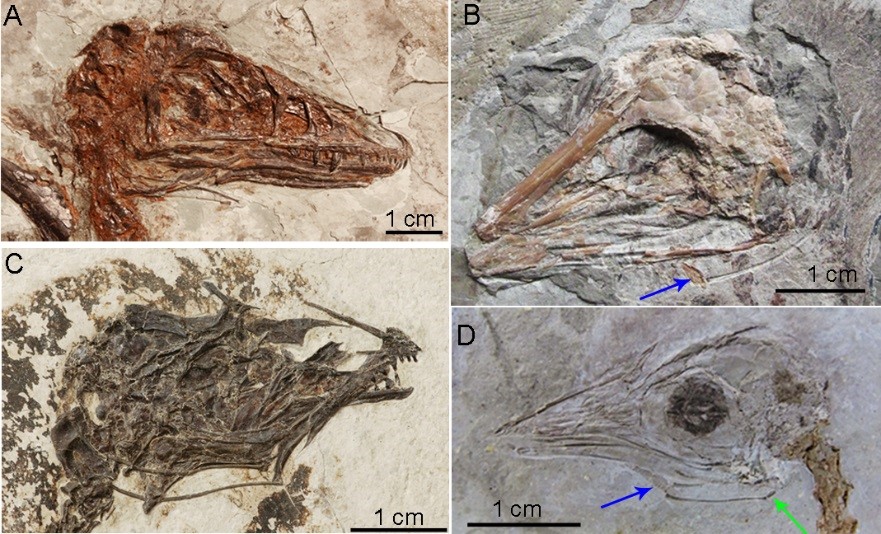The discovery was made by comparing the hyoid bones — the bones that support and ground the tongue — of modern birds and crocodiles with those of their extinct dinosaur relatives. In addition to challenging depictions of dino tongues, the research proposes a connection on the origin of flight and an increase in tongue diversity and mobility.
Hyoid bones act as anchors for the tongue in most animals, but in birds these bones can extend to the tip. Because extinct dinosaurs are related to crocodiles, pterosaurs and modern birds, comparing anatomy across these groups can help scientists understand the similarities and differences in tongue anatomy and how traits evolved through time and across different lineages.
The comparison process involved taking high-resolution images of hyoid muscles and bones from 15 modern specimens, including three alligators and 13 bird species as diverse as ostriches and ducks.. The fossil specimens, most from northeastern China, were scrutinized for preservation of the delicate tongue bones and included small bird-like dinosaurs, as well as pterosaurs and a Tyrannosaurus rex.

Delicate hyoid bones--the bones that support and ground the tongue--still preserved. The blue and green arrows point to the hyoid apparatus. Li et al. 2018
The results indicate that hyoid bones of most dinosaurs were like those of alligators and crocodiles — short, simple and connected to a tongue that was not very mobile. So dramatic reconstructions that show dinosaurs with tongues stretching out from between their jaws are wrong.
In contrast to the short hyoid bones of crocodiles, the researchers found that pterosaurs, bird-like dinosaurs, and living birds have a great diversity in hyoid bone shapes. They think the range of shapes could be related to flight ability, or in the case of flightless birds such as ostriches and emus, evolved from an ancestor that could fly. The researchers propose that taking to the skies could have led to new ways of feeding that could be tied to diversity and mobility in tongues.






Comments